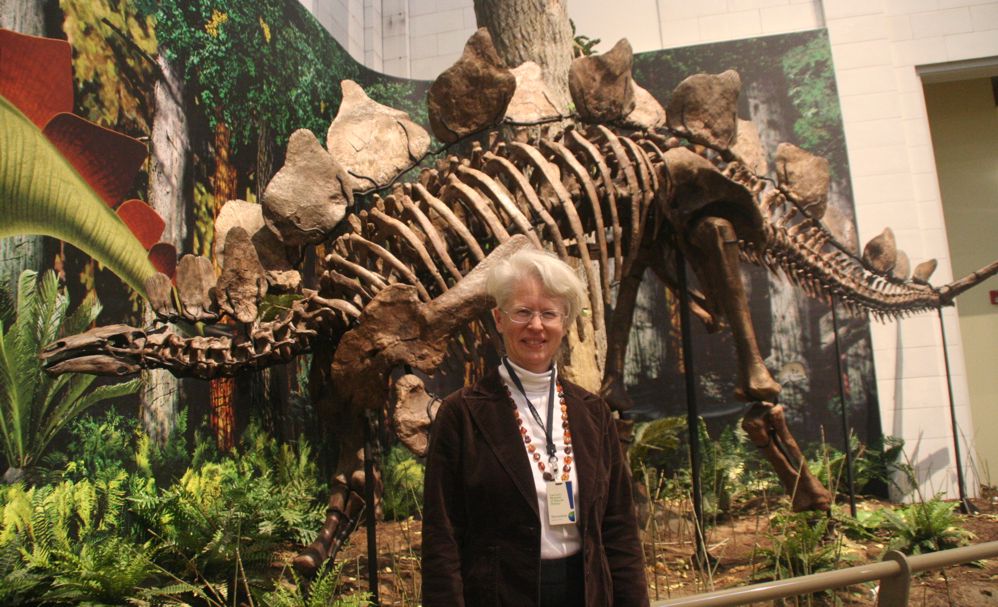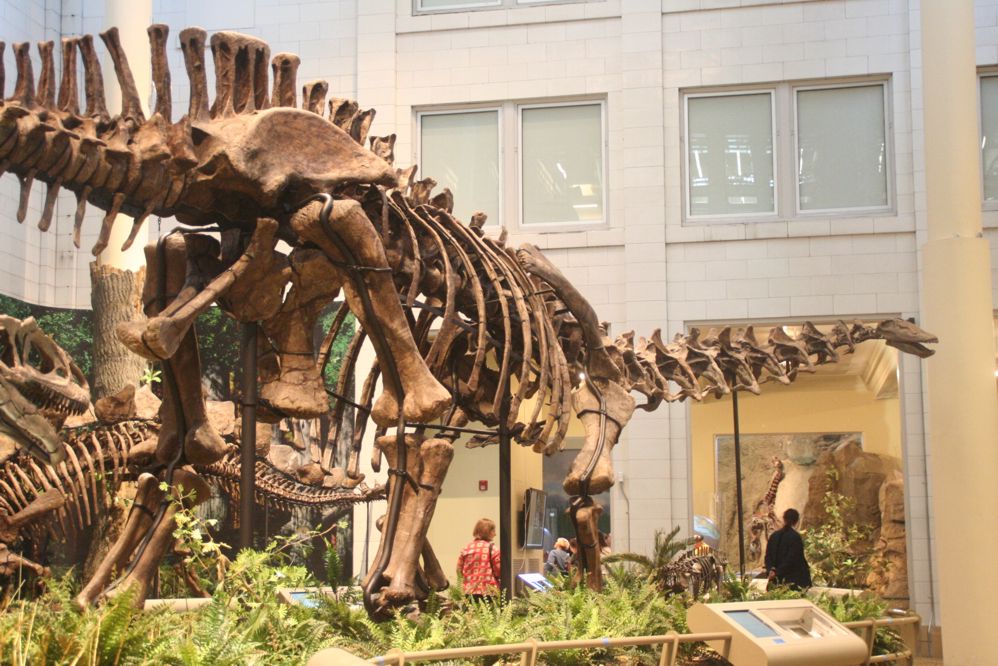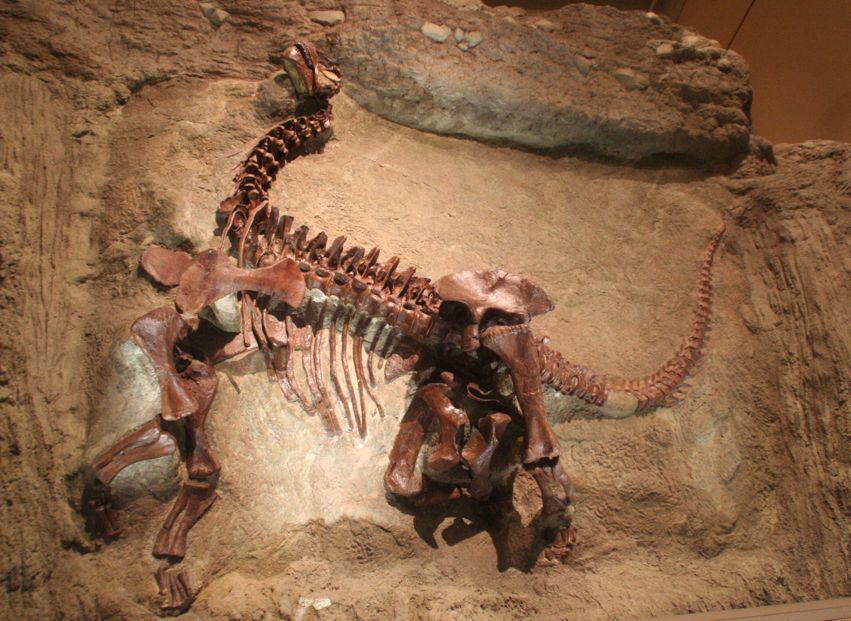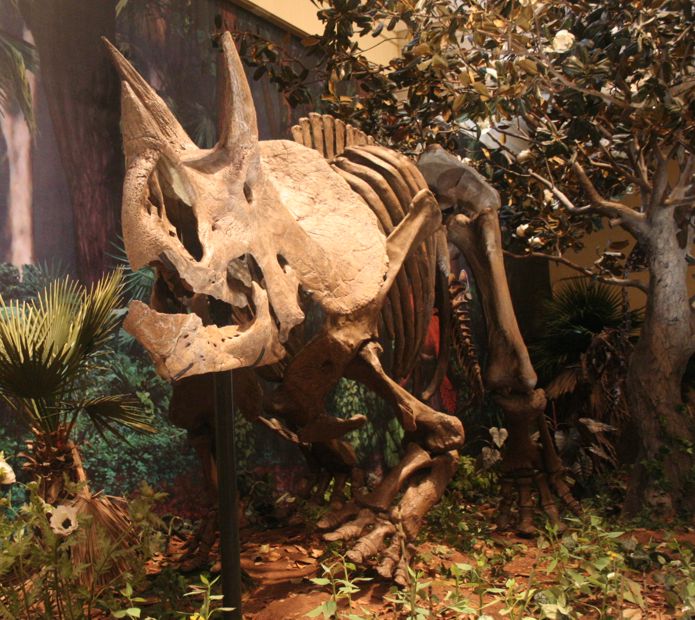
The Diplodocus Song
|
|
Home |
| Back to humor page |
 |
The Diplodocus Song |
|
To the tune of "My Darling Clementine"
(Inspired by the exhibit Dinosaurs In Their Time at the Carnegie Museum of Natural History)
|
Diplodocus, Diplodocus, Diplodocus Carnegii! You are lost, and gone forever! Diplodocus Carnegii. Stegosaurus, Stegosaurus Ungulatus Is his name. Armored back plates Did not save him Which is cer- tainly a shame! Brontosaurus, Brontosaurus, Brontosaurus: obsolete. You can pat Apatosaurus Itís the name Thatís right and meet. There was T. Rex: Many, heís vexed, For we donít know how he dined. Now he stands there with his tail up For no tail-tracks We could find. Camírasaurus Doesnít bore us Though heís stuck there In a rock. From a quarry Out in Utah They extracted His whole bulk. The Jurassic, In the past, it Had the dinos, In their prime! Ceratopsians Have all stopped, since It is no long- er their time The Cretaceous Wasn't spacious Life filled all The land and seas; Asteroidal Impacts void all Of their lifetime Guarantees There was trouble Down in Chixlub, One June morning At sunrise. Meteorite Came at first light And it hastened Their demise. Hail, Carnegie. Hail, Carnegie, And their Sec- tion of VP! Every dino Has new shine-o And theyíre there For us to see! Diplodocus, Diplodocus, Diplodocus Carnegii! You are lost, and gone forever! Diplodocus Carnegii. |
 Above: Diplodocus Carnegeii, affectionately known as "Dippy" |
 Above: Stegosaurus (extinct) and Gray Cat (smiling). |
|
 Above: Apatosaurus |
|
 Above: Battling T. Rexes |
|
 Above: Camarasaurus, in its original matrix |
|
 Above: A Ceratopsian-class dinosaur, Triceratops Prorus |
|
| (Coming soon: another Dippy image) |
![]()
Seriously: we know the time of day to within hours, the day of the year to within a week or so, and the year to within Ī1,000,000 years. This is based on an observation that large meteorites tend to strike the Earth in the morning, and that we still have plants today that date back to the era of the meteor strike. There are two types of plants; one blooms in early June and one blooms in late June. In the immediate post-K-T-layer, we find fossilized plants of both species; the first one has bloomed, and the second one hasn't. This limits the strike time to the second or third week of June. (back to song) [source: Chris Beard, Curator, Section of Vertebrate Paleontology, Carnegie Museum of Natural History, at a lecture he presented in 2005]
Photo credits: Joseph M. Newcomer
![]()